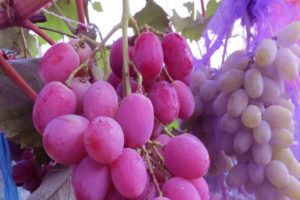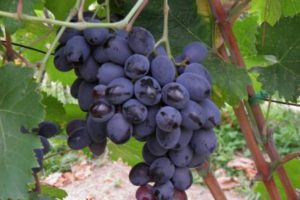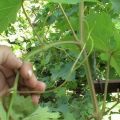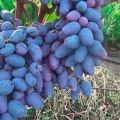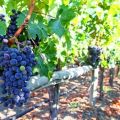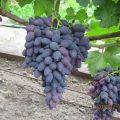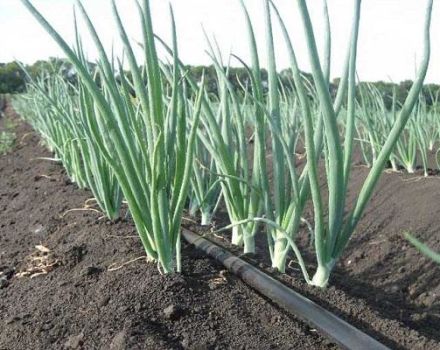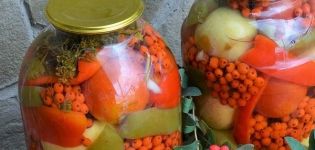Description and characteristics of the grape variety Rhombic, advantages and disadvantages, cultivation
The Rhombic grape variety is distinguished by its unpretentious care, abundant yield and ultra-early ripening. The vine will serve not only as a beautiful decoration for a fence or a wall, but also in average climates will bring fruits of excellent dessert taste, which are suitable for processing and fresh use. Before planting a variety on the site, you must carefully study the features of planting and care.
The uniqueness of the Rhombic variety
The hybrid was bred several years ago in the 10s of this century. The uniqueness is the very early ripening period. The first copies appear after 80 days. Many growers with extensive experience in this field are skeptical about this fact. But the ripening dates have already been confirmed by many gardeners.
The grape bush has strong vigor and is massive in size. To protect against crop overload, the inflorescences are normalized. Two brushes are left on the vine.
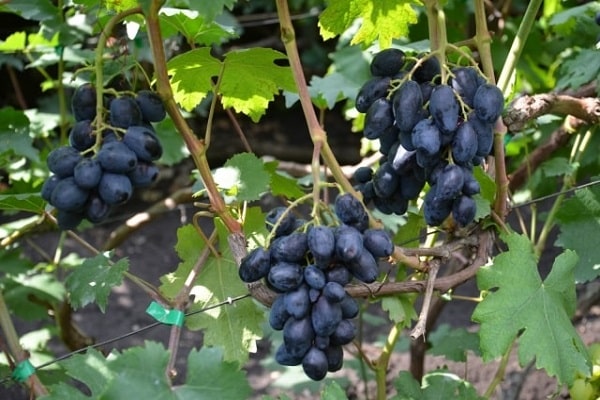
Advantages and disadvantages of a hybrid
The disadvantages include the young age of the hybrid, which does not allow making stable recommendations for growing. Gardeners note that the brushes grow small, and the berries have insufficient sugar content.
Positive traits:
- unusual taste;
- disease resistance;
- good transportability;
- withstands -23 ° С;
- attractive appearance of the fruit;
- rapid maturation;
- high productivity.
Typical diseases do not affect the hybrid, so there is no need to intensively process the plant many times.
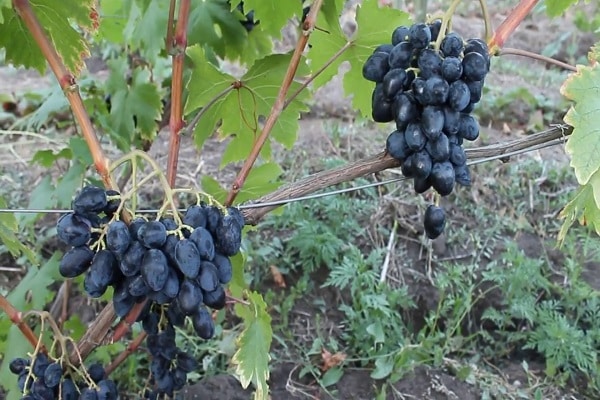
Disease susceptibility
With proper care, the plant is not susceptible to disease. But in rare cases, there are common ailments that affect grapes. The hybrid is rarely subject to the following.
Powdery mildew
The fungus attacks the green parts of the vine. A grayish bloom with a putrid smell forms on the foliage and shoots of the plant. As a result, the inflorescences fall off.
For prophylaxis, before inflorescences are formed on the vine, they are sprayed with the preparation "Flint". During processing, the manufacturer's recommendations are followed.
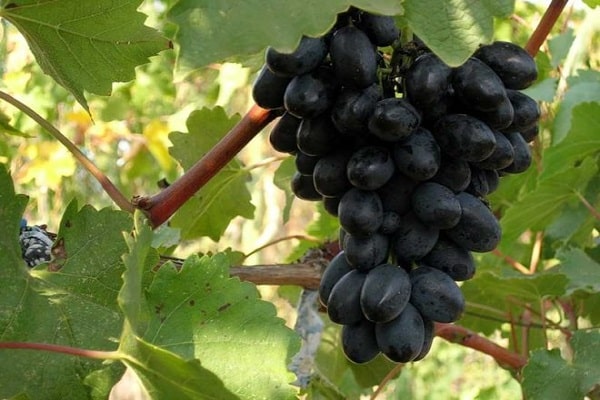
Mildew
This ailment is very dangerous for the plant. It affects the ground part of the vine. Leaves are covered with oily spots that can be yellow or green.If you do not take action, the foliage will fall off.
To prevent the disease, a vineyard ventilation system is being established. Destroy weeds that are carriers, and the affected leaves are burned.
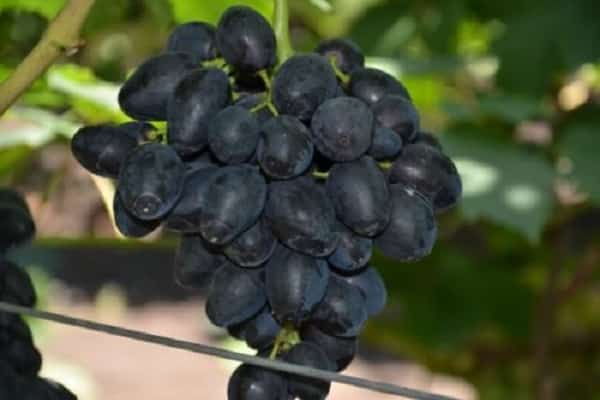
Anthracnose
Also called grapepox. It attacks early varieties of the plant. Not only leaves are affected, but also berries, which are covered with brown spots with a red rim, pressed into the inside.
If measures are not taken in time, the vineyard will perish. Multiple treatment with Bordeaux liquid helps.
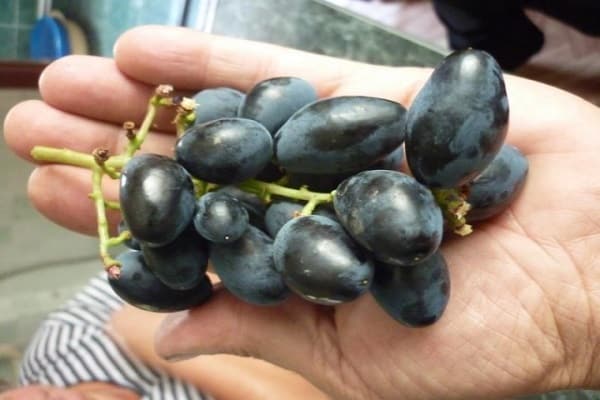
General information and external parameters
Before buying seedlings, it is recommended to study the description of the plant and understand whether it is suitable for growing in a particular area.
Frost resistance
The plant has medium frost resistance. Able to withstand cold temperatures of -25 ° C.
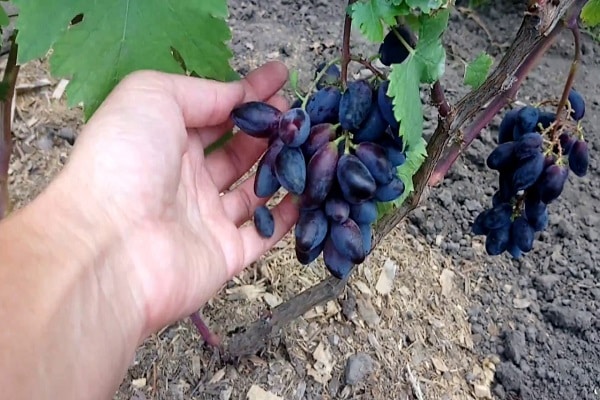
Bushes and shoots
Features of the bush:
- tall;
- differs in branchiness;
- bulky.
Bisexual flowers grow on the bush, so there is no problem with cross-pollination. The vine is fruitful.
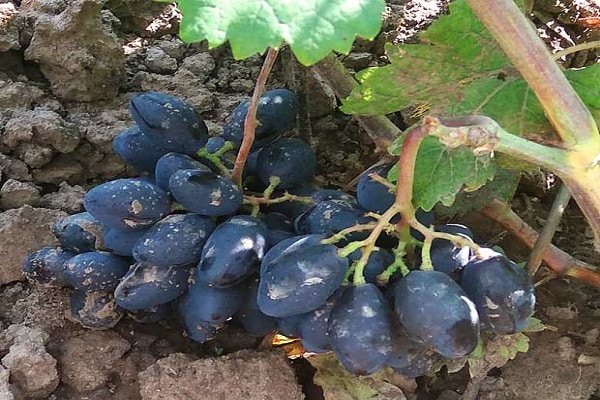
Berries and yield
The shape of the fruit is original, in a sense - unique. It is because of this that the plant got its interesting name.
Features of berries:
- The bunch weighs an average of 750 grams. The largest weight is 1 kg, the minimum is 500 grams.
- The berries are tightly attached to the brush. Therefore, in the process of maturation, they do not fall off and do not crumble.
- The berry is large. The weight of one is 13 grams, there are heavier specimens.
- The shape resembles a berry rhombus, which is smoothed from the sides.
- The brushes are tapered.
- A mature brush becomes almost black in color.
- The fruits have a minimum seed content.
- The skin is thin.
- The pulp is crispy.
- The fruit is moderately sweet to taste.
- Well transportable.
- Do not crack.
Features and landing algorithm
The hybrid is planted not only with seedlings, but also with cuttings. Important points are studied before landing.

Choosing a place
For further fruiting, the main thing is to choose the right planting site:
- should be well lit;
- choose a site protected from drafts and cold winds;
- a constant flow of sunlight is required.
Timing
It is recommended to plant a plant immediately after warming up the soil in spring.
Landing scheme and pit depth
The optimum diameter for a hole is 80 centimeters. Depth - 0.5 meters.

Agrotechnics
After planting the seedlings correctly, you will have to constantly pay attention to the plant and provide it with regular care.
Irrigation
In the first two months, the plant develops intensively, therefore it requires abundant, regular watering. Then the frequency is reduced, since the shoots need to stop growth and have time to ripen before frost.
Top dressing
To prevent the ovaries from crumbling, foliar feeding with boric acid is carried out. It is carried out before the blooming of flowers and after the formation of fruits.
In the spring, it is recommended to feed an adult plant with bird droppings.

Forming the vine and tying to the posts
A vertical support is installed in advance, since the variety is tall. Pruned in the autumn, before the shelter for the winter. This will rejuvenate the plant and increase future yield.
Seasonal processing
In the spring, they are treated with copper sulfate, which prevents the development of fungal ailments.
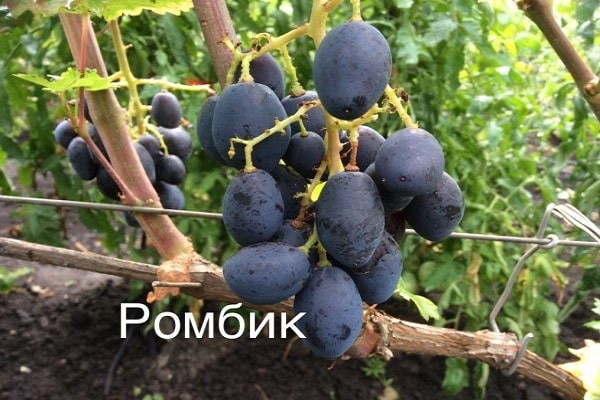
Flowering and fruiting period
Fruits begin to ripen on the 80th day, massively - on the 90th day. Usually mid-July. Flowering - early May.
Collection and use of bunches of grapes
The berries hold tightly to the brush. Therefore, with the onset of technical maturity, they do not crumble. The fruits are not susceptible to cracking, which helps to transport the crop over long distances.
High palatability allows you to consume the fruits fresh. Also suitable for canning, wine and juice making.

